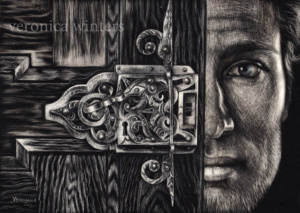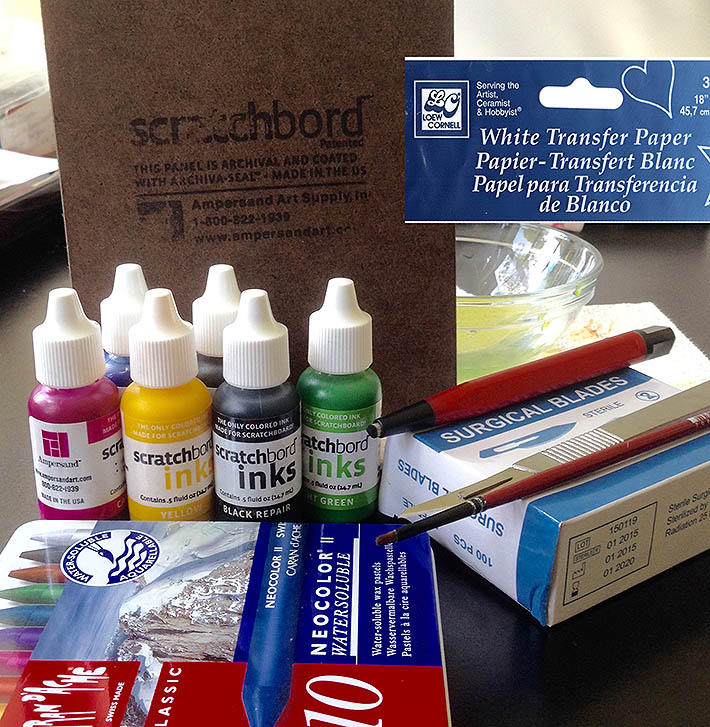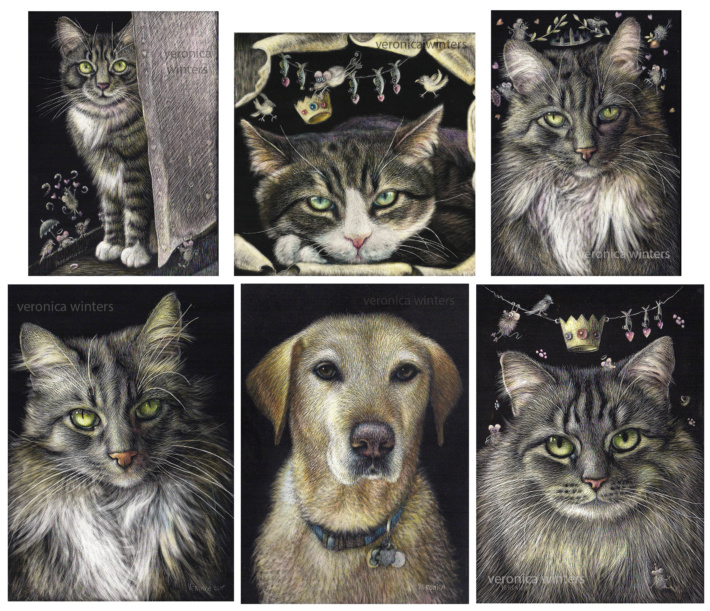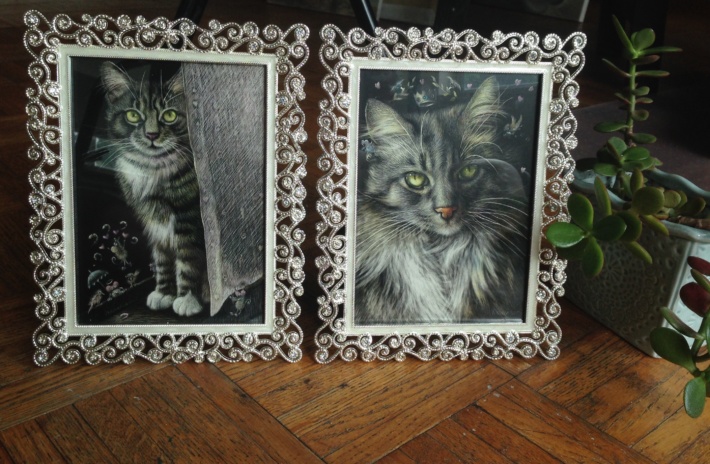Scratchboard Art Animals Scratchboard Art Animals Easy
Making scratchboard animals can be a lot of fun. Here I describe my first experience, tools and scratchboard techniques that I use to depict the character of pets and animals. It's a slow process. I scratch the soft clay off the black board with a needle or a scalpel to reveal the white. By overlapping my scratches, I can create the surfaces that look very white or have some shading in them. If you want to create a colored image, you end up scratching differently and in more layers. Despite the slowly evolving image, the realism and striking contrast you can achieve with scratchboard is amazing!
Scratchoard drawings are great for creating textured surfaces like fur, animal hair, feathers, or multitude of reflections, etc. The difficult part is to make smooth surfaces to look smooth and three-dimensional using the scratchboard tools. So to begin in scratchboard art pick an animal to draw that has good texture of the fur.

Scratchboard Tools & materials

I've tried several different tools, and I find that the line quality greatly affects the overall feel in a piece. At first I bought the Ampersand tool kit that gives options in creating various types of lines and textures. The lines or wiped out areas often felt too rough or incomplete to me using this kit, and thus I also experimented with the X-Acto knife, trying to thin out the line with this tool. The X-Acto knife gave me more control over the scratching part, but the blade dulled quickly and I had to replace it often.
Next, I went for the etching needle that I used for etching the plates in printmaking. I find that the etching needle gives me a much finer line and a much better control over the process, but just like the X-Acto knife it often produces deep, unnecessary groves that are hard to mask, if they become a mistake. Remember, once you cut, it's there, and no eraser is going to fix a problem.
Finally, thanks to Diana Lee' advice, I bought a scalpel with #11 surgical blades on Amazon. The line quality is guaranteed! It cuts nice and thin. And the dull blades are easy to replace. It's the only tool I use!
Coloring
Coloring in scratchboard is not easy at all. The applied colors look very harsh, and in order to make them weaker and more sophisticated you have to scratch the colored part out and re-apply the color and scratch again. This process involves lots of trial and error to understand how color works in scratchboard. If you just starting out, do a couple of pieces in black-and-white only to practice controlling your tones, and then experiment with color.
I use several art supplies to do the coloring. The professional Ampersand ink set will last you a lifetime. The advantages to using this set are supreme lightfastness, high color intensity, transparency, and ease of storage. The disadvantages include a fairly high cost, fast drying time, and problematic coloring.
Although the kit includes a note with the color mixing tips, coloring is far from easy mixing. Colors dry very fast, so fast they are impossible to remove if applied too thickly or by accident. You must be patient to learn to dilute them with water just enough to get better control in the application process. As they dry fast on a palette too, quick application of the right color combination is necessary, and that requires planning and experience.
Therefore instead of using the inks, I often opt out for lightfast, water-soluble Neocolor crayons manufactured by Caran d'Ache. I also dilute them with water and mix them with a brush, but they have a much slower drying time and thus give me more control over the color mixing itself. Some lightfast Pablo colored pencils are also good, and are the easiest to use coloring the scratchboards.
I also learned through my mistakes that coloring of the scratched out surface is not the end result. Because the first color layer looks crude, this surface requires more scratching and re-coloring. This requires planning and understanding how much to scratch out to color and then to recolor.
When I'm done scratching it out, I fix my piece with three coats of a professional spray fixative for dry media. The spray creates a nice, velvety sheen on the surface, obliterating the fingerprints and imperfections.
Here is a step-by-step demonstration of my scratchboard drawing:
You will need:
Ampersand scratchboard, 5×7″, Loew-Cornell white transfer paper, 2H graphite pencil or a pen to transfer the outlines, #11 scalpel blade, red pen ( is part of the Ampersand kit, but it's also sold separately online), permanent spray fixative (I strongly recommend to use the Grumbacher final varnish for dry media that you can by at dick blick online!)
Steps:
In these images you see the process that I've described above. I suggest to transfer the outline onto the scratchboard using the white transfer paper.
Next, scratch out the eyes and the fur. The trick to scratching out the fur is to pay attention to its length and direction.
Then you color and scratch out again to make the subtle shifts in color and tone.
I accept commissions drawing your favorite pets. Cost of a 5×7" archival, framed piece runs around $250 with the frame. I draw from high-res. pictures. Contact me for details at nika@veronicasart.com


furnellprinnybod59.blogspot.com
Source: https://veronicasart.com/scratchboard-animals-tools-techniques-commission-a-portrait/